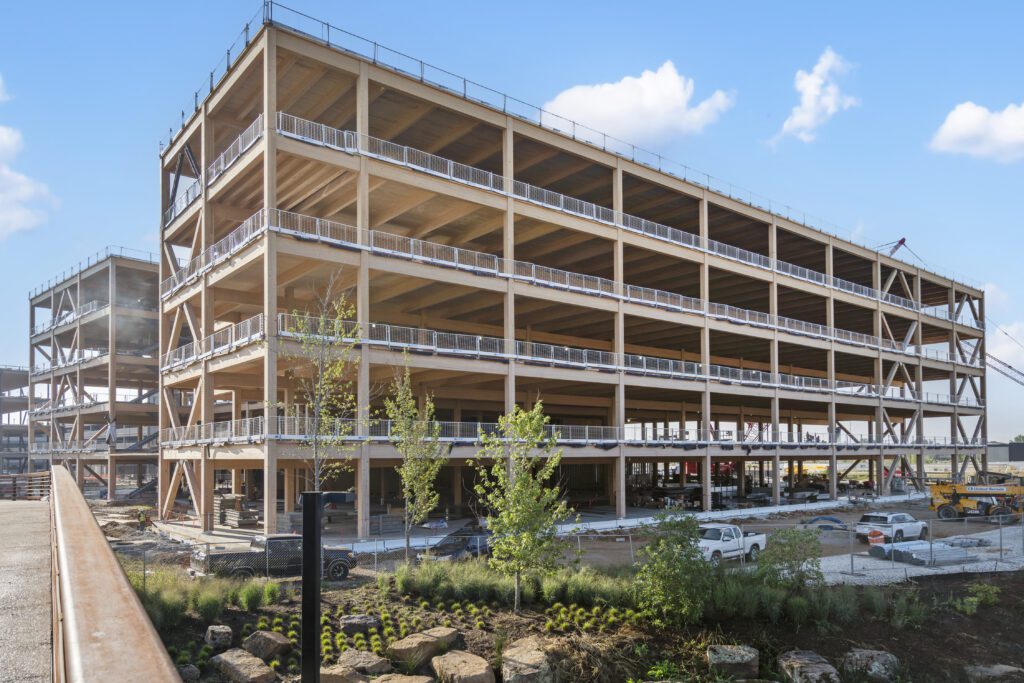CLT and glulam components contribute to the building’s sustainability ambitions.
by James Caulfield, Building Design + Construction
On July 4, 2026, the Theodore Roosevelt Presidential Library is scheduled to open on 93 acres in Medora, a town in North Dakota with under 130 permanent residents, but which nonetheless has become synonymous with the 26th President of the United States, who lived there for several years in the 1880s.
The under-construction $333 million library, situated on a Badlands butte near the Burning Hills Amphitheater, will not be a repository for Roosevelt’s papers or archives (which are mostly housed at Harvard University). Instead, the library’s goal is to honor the President’s legacy as a conservationist. Its design is informed by Roosevelt’s interest in environmental stewardship and his reflections about the landscape.
The single-story, 93,000-sf library/museum “is a journey preserving the existing landscape of diverse habitats punctuated with small pavilions allowing for reflection and activity,” according to the project’s website. “The main building’s gently sloping roof looks to the northeast, gazing out to the [70,447-acre] National Park, historical settings in the Little Missouri River valley, and the Elkhorn Ranch far in the distance, further connecting the Library of tomorrow with its origins of the past.”
“The Library is the landscape,” Edward O’Keefe, CEO of the Theodore Roosevelt Presidential Library, told the New York Times.

